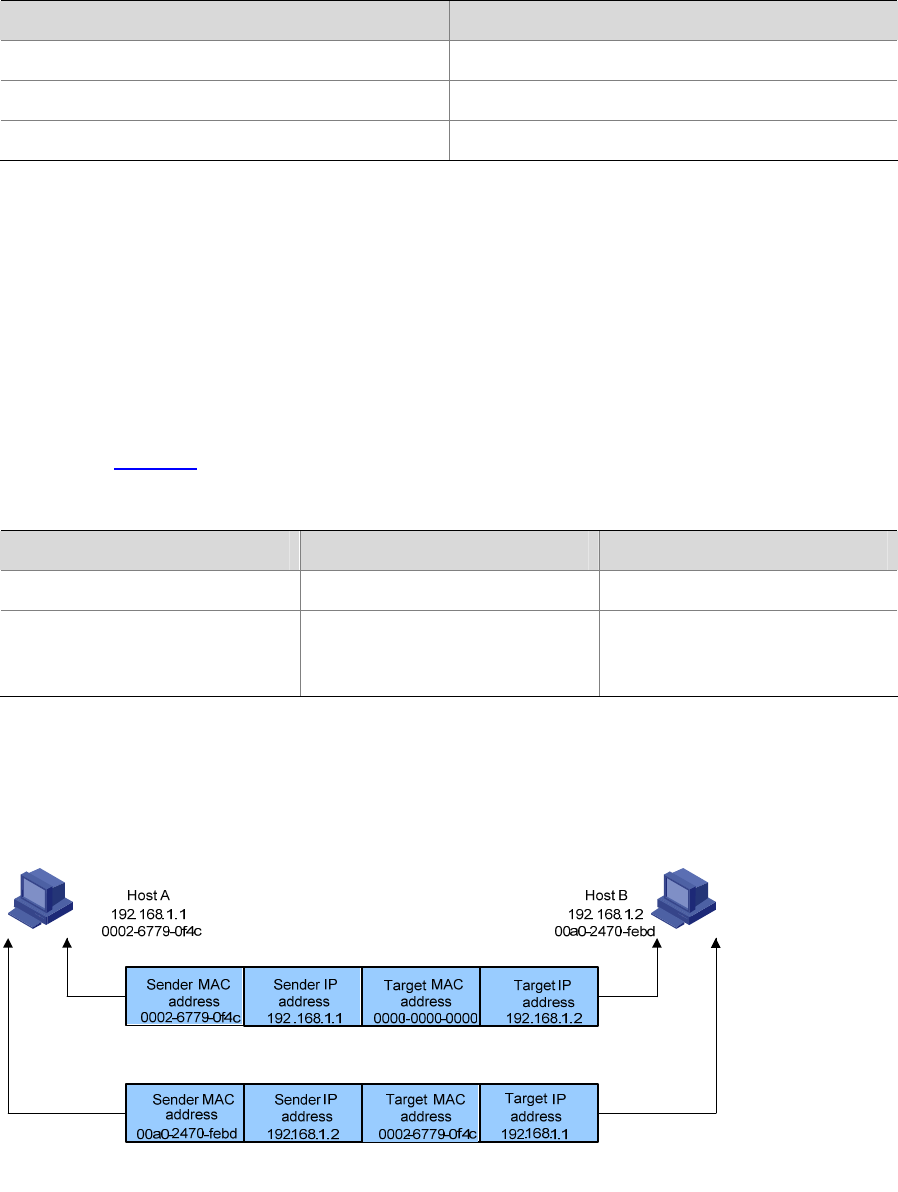
1-3
Value Description
5 Chaos
6 IEEE802.X
7 ARC network
ARP Table
In an Ethernet, the MAC addresses of two hosts must be available for the two hosts to communicate
with each other. Each host in an Ethernet maintains an ARP table, where the latest used IP
address-to-MAC address mapping entries are stored. S4500 series Ethernet switches provide the
display arp command to display the information about ARP mapping entries.
ARP entries in an S4500 series Ethernet switch can either be static entries or dynamic entries, as
described in
Table 1-3.
Table 1-3 ARP entries
ARP entry Generation Method Maintenance Mode
Static ARP entry Manually configured Manual maintenance
Dynamic ARP entry Dynamically generated
ARP entries of this type age
with time. The aging period is
set by the ARP aging timer.
ARP Process
Figure 1-2 ARP process
Suppose that Host A and Host B are on the same subnet and that Host A sends a message to Host B.
The resolution process is as follows:
1) Host A looks in its ARP mapping table to see whether there is an ARP entry for Host B. If Host A
finds it, Host A uses the MAC address in the entry to encapsulate the IP packet into a data link layer
frame and sends the frame to Host B.
2) If Host A finds no entry for Host B, Host A buffers the packet and broadcasts an ARP request, in
which the source IP address and source MAC address are respectively the IP address and MAC
address of Host A and the destination IP address and MAC address are respectively the IP
address of Host B and an all-zero MAC address. Because the ARP request is sent in broadcast


















